Exam Review &
Week 7 Preview
Week 7 Preview
Corticospinal tract
- AKA pyramidal tract
- Ventral and lateral tracts in spinal cord
- Motor control of limbs and trunk
Corticobulbar tract
- AKA Corticonuclear tract
- Motor control of face and tongue
- Difficult to pinpoint in a section.
Name the signs and symptoms of upper motor neuron syndrome.
- Spastic paralysis or paresis
- Hypertonia
- Hyperreflexia
_____ lesions result in _____ while ____ result in flaccid paralysis.
- Infranuclear, atrophy, supranuclear
- Supranuclear, spastic paralysis, infranuclear
- Infranuclear, fasciculations, nuclear
- Nuclear, hypertonia, infranuclear
Corticobulbar lesions above the facial nucleus may result only in transient symptoms.
True
False
Lower motor neurons of the facial nucleus are innervated only by the ______ corticobulbar tract.
Ipsilateral
Contralateral
Extraocular eye muscles are directly controlled by the cerebral cortex.
True
False
A patient presents in your office with unilateral paralysis of their left arm of insidious onset. The arm feels stiff when you attempt to extend it at the elbow, but resistance decreases as you extend it. What would you call this sign?
- Spastic paralysis
- Hypertonia
- Clasp-knife response
- Clonus
Adult Babinski Sign (Plantar Reflex)

Babinski
A patient presents to your office complaining of weakness in his right leg. You also observe a change in the patient's gait. Upon examination, you observe that abrupt dorsiflexion of the foot results in a rhythmic contraction and relaxation of the calf muscles, resulting in a tapping-like motion. What would you call this sign?
- Babinski sign
- Clasp-knife response
- Spastic paresis
- Clonus
Clonus
You are shadowing a physician assigned to the neurological floor at UVRMC. One of the patients on the floor was involved in a motorcycle accident and was not wearing a helmet. The patient is lying on his back with his arms flexed. Where might we find a lesion in his brain?
- Rostral midbrain
- Caudal pons
- Caudal medulla
- Cervical spinal cord
Vestibulospinal tract
Reticulospinal tract
Rubrospinal tract
- Mediates balance reflexes.
- Activates extensor muscles.
- Coordinates automatic movements
- "Anti-gravity" muscles (extensors)
- Inhibited by corticospinal tact.
- Facilitates flexion of upper extremities
Extrapyramidal Tracts
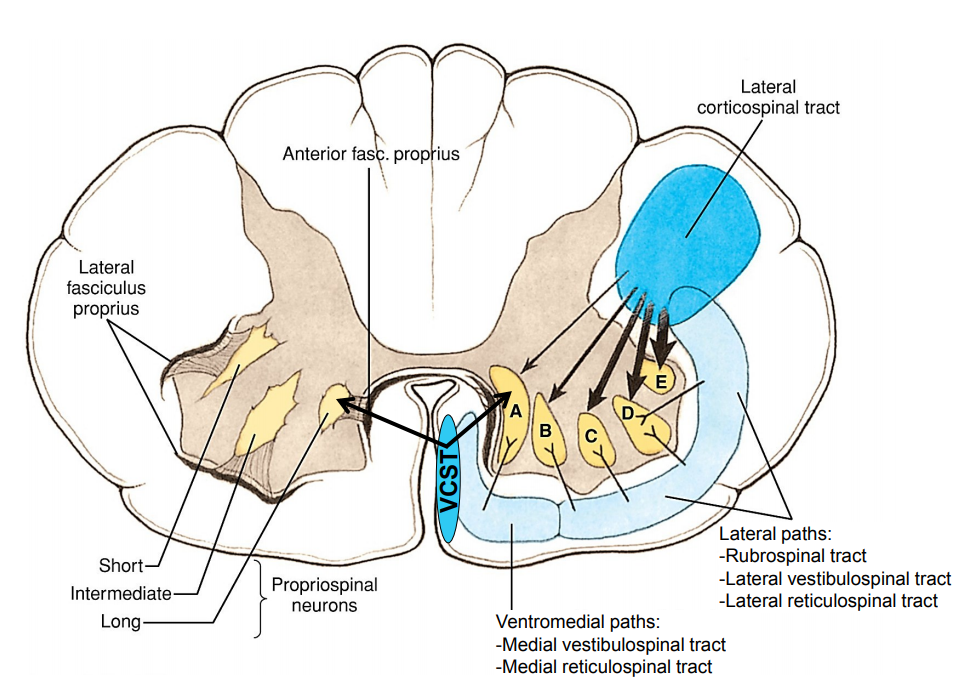
Specimens
Name the tract
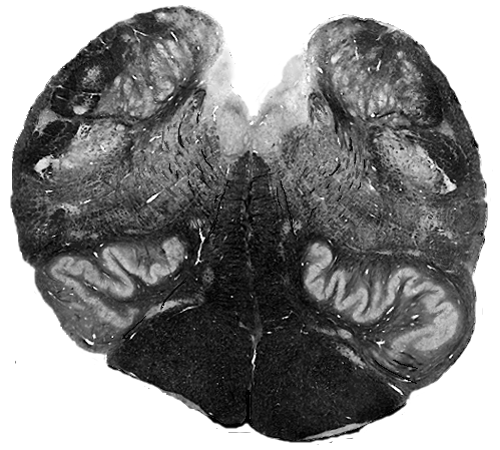
Name the tract
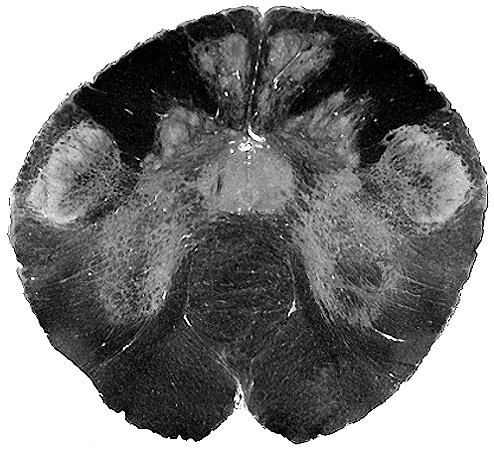
Name the tract
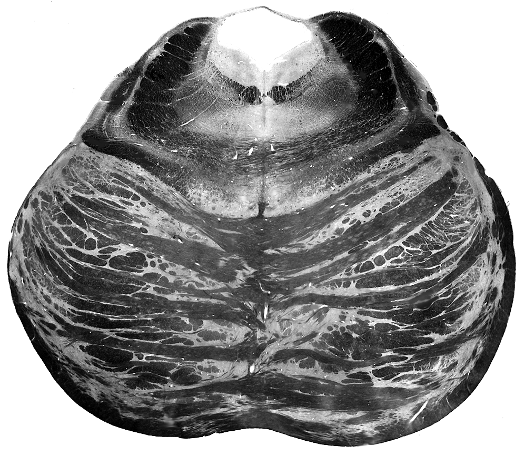
What begins here?
Name the tract
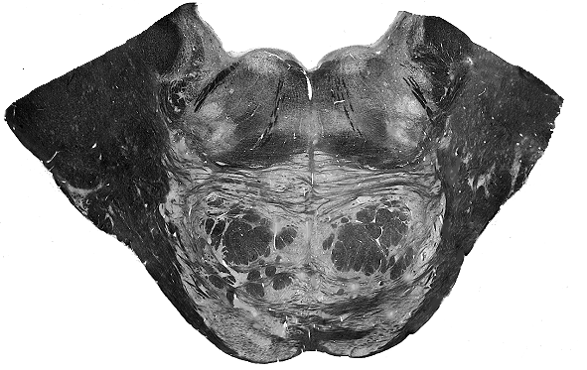
Name the tract

What is this?
What tract begins here?
Where is the corticospinal tract?
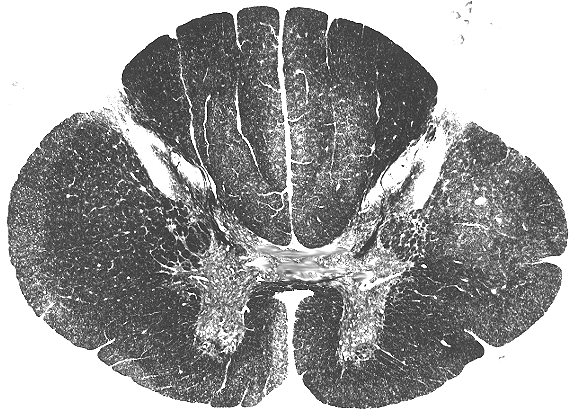
Where is the corticospinal tract?
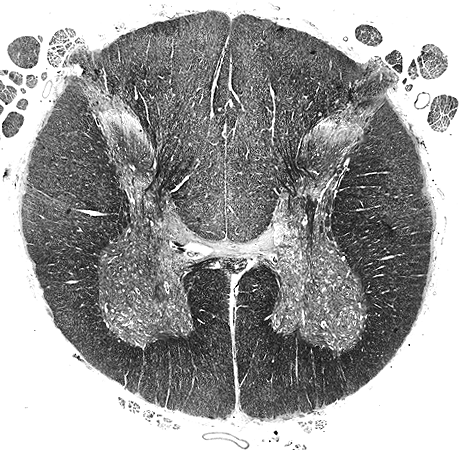
Name the structure
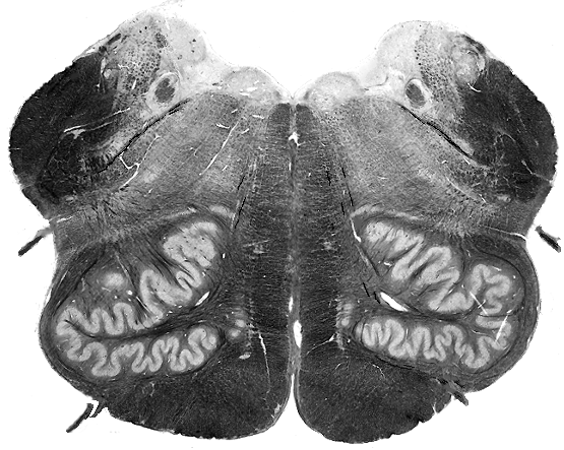
Name the structure
